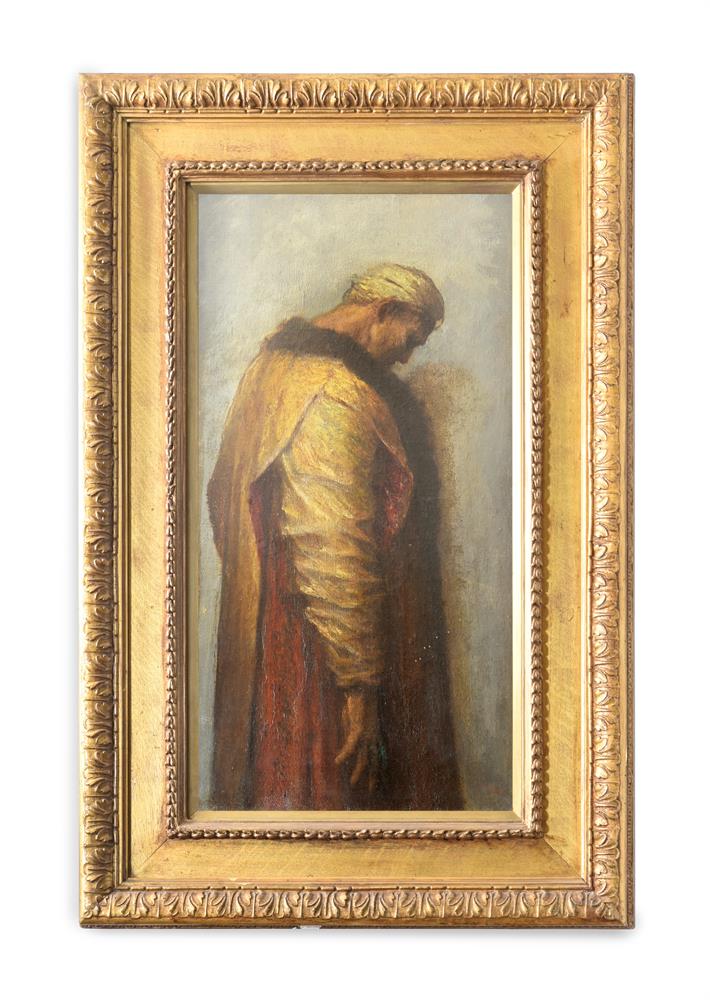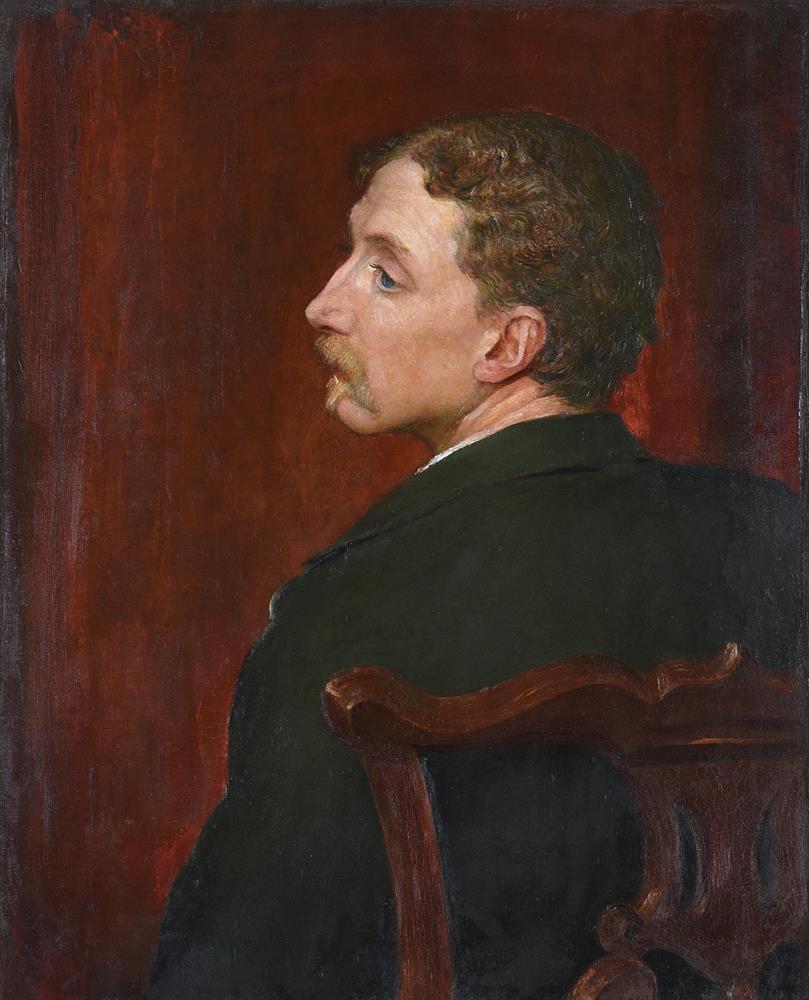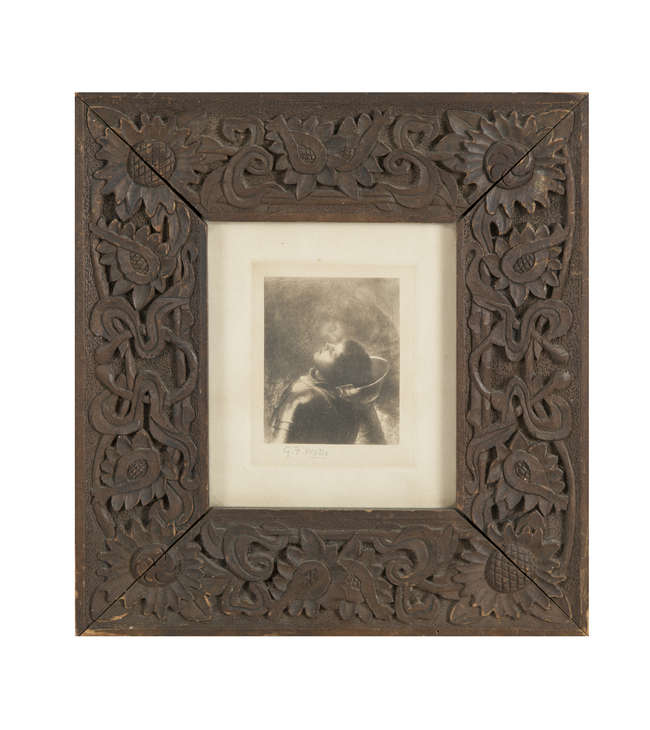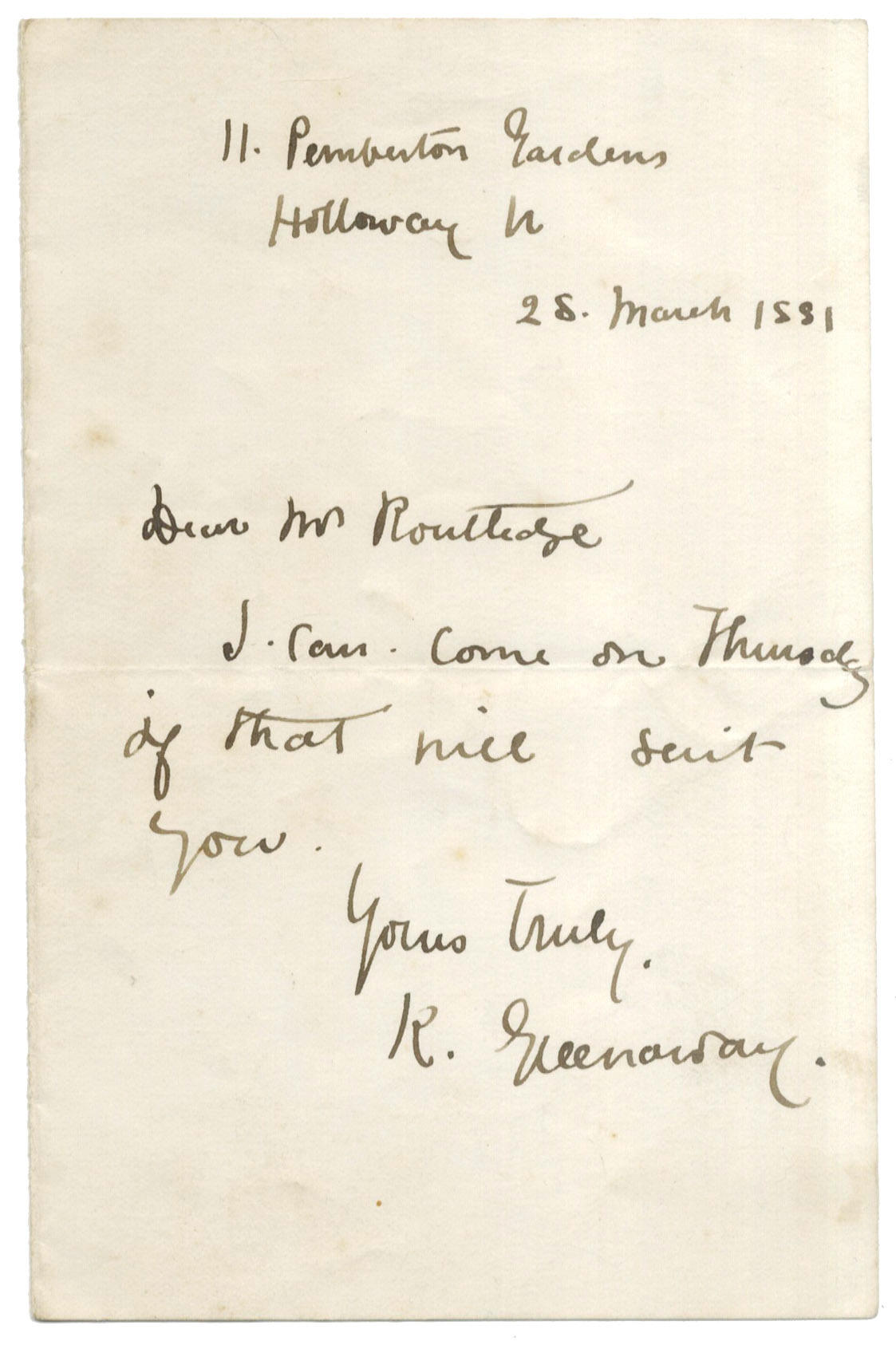GEORGE FREDERICK WATTS (ENGLISH 1817-1904) HAYSTACKS (STUDY ON BRIGHTON DOWNS) Oil on canvas 33.5 x 65.5cm (13 x 25¾ in.) Provenance: With the artist 1887 Given by the artist to Frederic, Lord Leighton His sale, Christie's, 14 July 1896 (3rd day), lot 343 Where bought by Sir William Agnew, Bt., for 290 gns Still with Sir William Agnew in 1905 Christie's, London, 11 June 2002, lot 118, where purchased by Robert Kime Exhibited: Grosvenor Gallery, London, 1883, no. 59, as Study on Brighton Downs Manchester, Royal Jubilee Exhibition, 1887, Fine Art Section, no. 249, as Haystacks, lent by the artist Royal Academy, London, Exhibition of Works by the late George Frederick Watts, R.A., O.M and the late Frederick Sandys, Winter 1905, no. 26, as Landscape, lent by Sir William Agnew City Art Gallery, Manchester, G.F Watts Memorial Exhibition, 1905, no. 148, as Landscape, lent by Sir William AgnewLiterature: Times, 30 April, 1883, p.4 Mrs Watts's Manuscript catalogue, vol. I, p.16 as Brighton Downs The present lot was painted in 1882 and exhibited the following year at the Grosvenor Gallery as Study on Brighton Downs, although the name Haystacks was already given to it when it was noticed briefly in a review in the Times, and Watts himself seems to have adopted this title later. No doubt the subject was one he had seen when travelling to or from the town, where he had a winter studio from 1876. Like so many of Watts's landscapes, Haystacks (Study on Brighton Downs) is astonishingly minimal. No other Victorian artist made more daring experiments of this kind; they are one of his work's most original aspects. Haystacks as a subject seem to have been a constant source of wonder and inspiration to Watts. The picture is reminiscent of Evening (Ashmolean Museum, Oxford), a small panel of 1864 in which he introduced some examples he had seen in the vicinity of Little Holland House, Kensington. However, unlike the Oxford picture which has overt literary associations; an armed knight is seen riding by, and the picture's alternative title, 'All the air a solemn stillness holds', taken from Thomas Gray's Elegy, this picture focuses attention on the haystacks alone. Characteristically though, Watts still manages to suggest a symbolist dimension. Stark as it is, the image has none of the objectivity of a painting of a haystack by for example, Monet. Watts must have thought highly of the picture to have sent it to the Grosvenor, and it was still in his possession when he lent it to the Royal Jubilee Exhibition at Manchester in 1887. He subsequently gave it to Sir Frederic Leighton, who had, according to Mrs Watts in her manuscript catalogue of her husband's works, 'admired' it. Leighton and Watts were not only close friends but neighbours in the artists' colony which had developed in the Holland Park area since the 1860s. When the picture appeared at Leighton's posthumous sale at Christie's in July 1896 it was bought by the dealer Sir William Agnew, who apparently wanted it for his own collection rather than stock. He still had it nine years later, when he lent it to the first two venues of the memorial exhibition which toured the country following Watts's death in 1904.
GEORGE FREDERICK WATTS (ENGLISH 1817-1904) HAYSTACKS (STUDY ON BRIGHTON DOWNS) Oil on canvas 33.5 x 65.5cm (13 x 25¾ in.) Provenance: With the artist 1887 Given by the artist to Frederic, Lord Leighton His sale, Christie's, 14 July 1896 (3rd day), lot 343 Where bought by Sir William Agnew, Bt., for 290 gns Still with Sir William Agnew in 1905 Christie's, London, 11 June 2002, lot 118, where purchased by Robert Kime Exhibited: Grosvenor Gallery, London, 1883, no. 59, as Study on Brighton Downs Manchester, Royal Jubilee Exhibition, 1887, Fine Art Section, no. 249, as Haystacks, lent by the artist Royal Academy, London, Exhibition of Works by the late George Frederick Watts, R.A., O.M and the late Frederick Sandys, Winter 1905, no. 26, as Landscape, lent by Sir William Agnew City Art Gallery, Manchester, G.F Watts Memorial Exhibition, 1905, no. 148, as Landscape, lent by Sir William AgnewLiterature: Times, 30 April, 1883, p.4 Mrs Watts's Manuscript catalogue, vol. I, p.16 as Brighton Downs The present lot was painted in 1882 and exhibited the following year at the Grosvenor Gallery as Study on Brighton Downs, although the name Haystacks was already given to it when it was noticed briefly in a review in the Times, and Watts himself seems to have adopted this title later. No doubt the subject was one he had seen when travelling to or from the town, where he had a winter studio from 1876. Like so many of Watts's landscapes, Haystacks (Study on Brighton Downs) is astonishingly minimal. No other Victorian artist made more daring experiments of this kind; they are one of his work's most original aspects. Haystacks as a subject seem to have been a constant source of wonder and inspiration to Watts. The picture is reminiscent of Evening (Ashmolean Museum, Oxford), a small panel of 1864 in which he introduced some examples he had seen in the vicinity of Little Holland House, Kensington. However, unlike the Oxford picture which has overt literary associations; an armed knight is seen riding by, and the picture's alternative title, 'All the air a solemn stillness holds', taken from Thomas Gray's Elegy, this picture focuses attention on the haystacks alone. Characteristically though, Watts still manages to suggest a symbolist dimension. Stark as it is, the image has none of the objectivity of a painting of a haystack by for example, Monet. Watts must have thought highly of the picture to have sent it to the Grosvenor, and it was still in his possession when he lent it to the Royal Jubilee Exhibition at Manchester in 1887. He subsequently gave it to Sir Frederic Leighton, who had, according to Mrs Watts in her manuscript catalogue of her husband's works, 'admired' it. Leighton and Watts were not only close friends but neighbours in the artists' colony which had developed in the Holland Park area since the 1860s. When the picture appeared at Leighton's posthumous sale at Christie's in July 1896 it was bought by the dealer Sir William Agnew, who apparently wanted it for his own collection rather than stock. He still had it nine years later, when he lent it to the first two venues of the memorial exhibition which toured the country following Watts's death in 1904.








Testen Sie LotSearch und seine Premium-Features 7 Tage - ohne Kosten!
Lassen Sie sich automatisch über neue Objekte in kommenden Auktionen benachrichtigen.
Suchauftrag anlegen